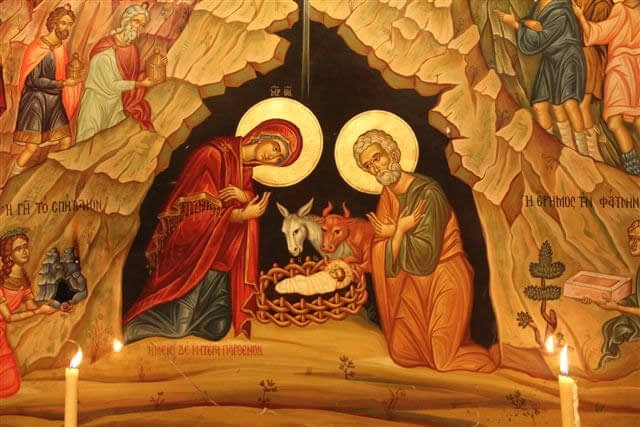April 9, 2023 STM Toronto
The first witnesses of the Passion, Death and Resurrection of Jesus Christ maintain that the same Jesus who had been brutally and unmistakably put to death and buried was, through the power of God and the grace of hope, alive again.
This is the essence of the historical claim of Christianity to eternal hope.
The crucified Jesus was not vaguely “with God,” nor had his soul escaped from his body; nor had he risen in a purely symbolic or metaphorical sense. He, Yeshoua from Nazareth, the friend whom they knew, was alive again. What devout Jews hoped for all the righteous dead was that, at the end of time, they would be found with God in the general resurrection. But this resurrection had happened, in time, to this one particular man, to Jesus.
It was the complete novelty of the event that gave such energy to the first Christian proclamation. On practically every page of the New Testament, we find the early Christians were not trading in bland spiritual abstractions. They were telling the world that something so new and astounding had happened that nothing would ever again be the same.
Over the past couple of centuries, many thinkers, both inside and outside of the Church, have endeavored to reduce the resurrection message to the level of myth or symbol. Easter, they argue, Is one more iteration of the “springtime saga” that can be found, in one form or another, in most cultures, namely, that life triumphs over death in the “resurrection” of nature after the bleak months of winter.
Or, is it a symbolic way of saying that the cause of Jesus lives on in his followers. But as, C.S. Lewis keenly observed, those who think the resurrection story is a myth haven’t read many myths. Mythic literature deals in ahistorical archetypes, and so speaks of things that happened “once upon a time” or “in a galaxy far, far away.”
But the Gospels don’t use that sort of language. In describing the resurrection, they mention particular places like Judea and Jerusalem, and specify that the event took place when Pontius Pilate was the Roman governor of the region, and name distinct individuals: Peter, John, Thomas, who encountered Jesus after he rose from the dead.
No one dies defending a myth. The myths of Greece and Rome are powerful and illuminating but there are no martyrs to Zeus or Dionysus or Osiris. But practically all of the first heralds of the resurrection went to their deaths defending the truth of their message. Christ is risen!
What does the resurrection of Christ mean then? What does it mean to history and to humanity? It means, first, that the customary manner in which we understand the relationship between order and violence—from the Epic of Gilgamesh to “Game of Thrones”—has to be rethought.
On the standard Realpolitik reading of things, order comes about through the violent imposition of strength. And if that order is lost or compromised, it must be restored through an answering violence. This is, as many view it – the way of the world.
When the risen Jesus presented himself alive to his disciples, they were, we are told, afraid. Their fear might not have been simply a function of their seeing something uncanny; it might have been grounded in the assumption that he was back for vengeance. However, after showing his wounds, the risen Jesus said to his friends, “Shalom,” Peace.
The teacher who had urged his followers to turn the other cheek and to meet violence with forgiveness exemplified his own teaching in the most vivid way possible. And what he shows us, thereby, is that the divine manner of establishing order does not have violence, retribution, or an eye-for-an-eye retaliation at its heart.
Instead, Jesus radiates a love and forgiveness which swallows up hate, with forgiveness which triumphs over aggression. It is this great resurrection principle of hope which, explicitly or implicitly, undergirded the liberating work of saints like Pope Saint John Paul II in Poland. He was able to stand athwart the received wisdom only because he had opted for the way of love and hope. Jesus was going with the deepest meaning, operating in concert with the purposes of God: faith, hope and love.
Secondly, the resurrection means that God has not given up on creation – there is hope for humankind. According to the well-known account in the book of Genesis, God made the whole array of finite things—sun, moon, planets, stars, animals, plants, things that creep and crawl on the earth—and found it all good, even very good.
All that God has made reflects some aspect of goodness and all created things together constitute a beautiful and tightly-woven tapestry of hope. As the Old Testament lays out the story, human sin made a wreck of God’s creation, turning the garden into a desert. But the faithful God kept sending rescue operation after rescue operation: Noah’s Ark, the Prophets, the Law, and the Temple, even the people of Israel itself. There is always hope.
Finally, God entered his own Creation as the Word or Logos, the perfect icon or incarnation of meaning and love. In raising the Incarnate Son from the dead, God has definitively saved and ratified creation, very much including the material dimension of it (which is why it matters that Jesus was raised bodily from death). Over and again we, God’s creatures, have said no to the goodness of creation; but God insistently says yes. Inspired by this divine yes, we always have a reason to hope in the Resurrection – Alleluia Christ is risen! He is risen indeed.














